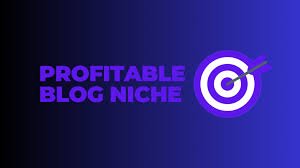Starting a blog can seem overwhelming, but it doesn’t have to be. Whether you’re looking to share your personal experiences, start a business, or establish your authority in a specific niche, blogging is one of the most powerful tools you can use. In this comprehensive guide, we will walk you through the basics of blogging, from choosing your niche to publishing your first post. Let’s dive into Blogging 101!
Step 1: Choose Your Blogging Platform
The first step in your blogging journey is selecting the right platform. There are many blogging platforms available, but WordPress.org and Blogger are the most popular among beginners. If you’re serious about building a brand or business around your blog, WordPress.org is a great choice. It’s self-hosted, meaning you’ll need to buy a domain and hosting, but it gives you complete control over your site.
For those looking for a simpler option, Blogger is a free and easy-to-use platform that allows you to start blogging without any upfront costs. However, it lacks some customization and scalability options, which may be limiting in the long run.
Step 2: Pick a Niche
One of the first decisions you’ll need to make is what your blog will be about. This is known as your blog’s “niche.” Your niche will define your audience and guide the direction of your content. When choosing a niche, think about what you’re passionate about and what you can write about consistently. Popular niches include:
- Lifestyle
- Personal Finance
- Travel
- Food and Recipes
- Health and Fitness
- Technology
It’s important to strike a balance between something you’re passionate about and something people are interested in. Conduct keyword research using tools like Google Keyword Planner or Ubersuggest to identify what people are searching for in your chosen niche.

Step 3: Select a Domain Name
Your domain name is the web address that will represent your blog. Choose a domain that is easy to remember, short, and relevant to your niche. If possible, opt for a .com domain, as it is the most common and trusted domain extension. If your desired domain name is already taken, try adding words like “blog,” “online,” or “the” to make it unique.
Once you’ve selected your domain name, you’ll need to register it. Services like GoDaddy, Namecheap, or Bluehost make the registration process quick and easy. Domain registration usually costs between $10–$15 per year.
Step 4: Get Hosting and Set Up Your Blog
For WordPress.org users, the next step is purchasing a hosting plan. Hosting is where all of your website files will be stored, and you need a reliable service to keep your blog online. Bluehost and SiteGround are two well-known hosting providers that offer great customer support and easy WordPress integration.
Once you’ve purchased hosting, you can install WordPress on your site. Most hosting providers offer one-click WordPress installations, so this should be a simple process.
Step 5: Choose a Theme and Customize Your Blog
Now that your blog is set up, it’s time to make it look great! WordPress has a variety of free and paid themes that you can use to personalize the design of your blog. Choose a theme that fits your style and your niche. For example, if you’re starting a lifestyle blog, look for a theme that is clean, modern, and easy to read.
You can also customize your theme to match your branding, such as changing colors, fonts, and adding your logo. If you’re not familiar with design, there are plenty of tutorials available to help you customize your theme effectively.

Step 6: Create Essential Pages
Before you start writing blog posts, you’ll need to create a few essential pages that will help your audience understand what your blog is about and how they can get in touch with you. These pages include:
- About Page: This page should introduce yourself and explain the purpose of your blog. It’s where your readers will learn more about you and why they should follow your content.
- Contact Page: Make it easy for readers and potential clients to contact you by adding a contact form or your email address.
- Privacy Policy and Terms of Service: These are legal pages that are required by law, especially if you plan on monetizing your blog with ads, affiliate marketing, or selling products.
Step 7: Start Writing Your First Blog Post
Now comes the fun part: writing your first blog post! Choose a topic that aligns with your niche and that you feel passionate about. Your first post can be an introduction to who you are and what readers can expect from your blog, or you can dive right into a specific topic of interest.
Here are a few tips for writing your first post:
- Write a catchy headline: A good headline should grab attention and make people want to click on your post. Keep it clear, concise, and engaging.
- Keep it conversational: Write in a friendly, approachable tone. Your readers should feel like you’re having a conversation with them.
- Add images: Including relevant images in your post can make it more engaging and break up large chunks of text. Use free stock image websites like Unsplash or Pexels.
- Add internal and external links: Link to other relevant blog posts on your site, as well as authoritative sources. This will help with SEO and provide value to your readers.

Step 8: Promote Your Blog
Once your first post is live, it’s time to promote it! Share your post on social media platforms like Facebook, Twitter, Instagram, and LinkedIn. Engage with your followers and respond to any comments or questions. Consider collaborating with other bloggers in your niche to expand your reach.
SEO (Search Engine Optimization) is another critical factor in driving traffic to your blog. Optimize your content for search engines by using keywords, writing compelling meta descriptions, and using alt text for your images.
Conclusion
Starting your own blog can be an exciting and rewarding experience. By following the steps in this guide, you’ll be on your way to creating a blog that can provide value to your audience and help you achieve your goals. Remember, blogging is a journey, and consistency is key. So, take it one step at a time, and don’t be afraid to experiment and grow along the way. Happy blogging!
Related Tags:
- Blogging Basics
- How to Start a Blog
- Beginner’s Guide to Blogging
- WordPress Tips
- Blogging for Beginners
- SEO for Blogs
- Create a Blog
- Blogging Tips
- Domain and Hosting
- Content Creation













